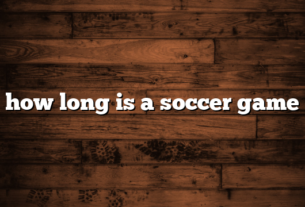Can You Wear Football Cleats in Soccer? A Comprehensive Guide
Choosing the right footwear is crucial for performance and safety in sports. For players and parents, a common question arises: can you wear football cleats in soccer? While both sports share similarities in terms of gameplay and equipment, the design and functionality of cleats for football and soccer are tailored to meet the specific demands of each sport. This comprehensive guide will explore the differences between football and soccer cleats, the reasons behind these differences, and whether it’s advisable to wear football cleats in soccer.
Understanding Cleat Design and Purpose
Football Cleats
Football cleats are designed to provide maximum stability and support for the variety of movements required in football, such as sprinting, tackling, and sudden changes of direction. Key characteristics include:
- Ankle Support: Many football cleats have a higher cut to provide additional ankle support, crucial for preventing injuries during physical tackles and rapid directional changes.
- Stud Configuration: Football cleats often feature a mix of studs, including some longer studs for better grip on grass, as well as specific patterns to enhance traction during pushing and blocking.
- Weight: Football cleats are generally heavier to offer more protection and stability, which is necessary given the physical nature of the sport.
Soccer Cleats
Soccer cleats are designed with agility, speed, and ball control in mind. Key characteristics include:
- Low Cut: Soccer cleats usually have a low-cut design to allow maximum ankle mobility, which is essential for dribbling, quick turns, and changes in direction.
- Stud Configuration: The stud pattern in soccer cleats is optimized for traction and stability on a soccer field, with shorter and more uniformly distributed studs to facilitate smooth movements and better ball control.
- Weight: Soccer cleats are lighter to enhance speed and agility, helping players to maintain high performance over the course of a match.
Differences Between Football and Soccer Cleats
Design and Structure
The fundamental design differences stem from the demands of each sport. Football cleats prioritize support and stability, often resulting in a bulkier and more protective shoe. Soccer cleats, on the other hand, emphasize lightweight construction and flexibility, allowing for precise footwork and quick maneuvers.
Stud Patterns
The stud patterns in football and soccer cleats are significantly different. Football cleats have studs arranged to provide grip for short, explosive movements and stability during contact. Soccer cleats have a more even distribution of studs to ensure grip during running, turning, and kicking.
Weight and Material
Football cleats are made from sturdier materials to provide protection against impacts, making them heavier. Soccer cleats use lighter materials to enhance speed and comfort, allowing players to perform complex footwork and maintain stamina.
Can You Wear Football Cleats in Soccer?
Rule Considerations
Official soccer regulations, such as those set by FIFA, generally do not prohibit wearing football cleats in soccer. However, it’s essential to check the rules of the specific league or tournament, as some might have stricter regulations regarding footwear.
Performance Implications
While it is possible to wear football cleats in soccer, doing so can impact your performance and safety. The differences in design and functionality mean that football cleats might hinder the agility and ball control required in soccer. The added weight and lack of flexibility can slow you down and make precise movements more difficult.
Safety Concerns
The higher cut and heavier structure of football cleats can lead to discomfort and increased risk of injury in soccer. The studs designed for football fields may not provide adequate traction on a soccer field, increasing the likelihood of slipping or tripping.
Recommendations for Players
Optimal Footwear
For the best performance and safety, it’s recommended to wear soccer-specific cleats. These are designed to meet the unique demands of the sport, providing the necessary grip, flexibility, and comfort.
Situational Use
If you’re in a situation where you don’t have access to soccer cleats and need to use football cleats temporarily, be mindful of the limitations and risks. Try to choose a pair with the least interference to your movement and agility.
Investing in Proper Gear
Investing in a good pair of soccer cleats can make a significant difference in your performance and safety on the field. Look for cleats that fit well, provide good traction, and suit your playing style and position.
Conclusion
While you can technically wear football cleats in soccer, it’s not advisable due to the differences in design and functionality that can affect performance and safety. Soccer cleats are specifically engineered to enhance agility, speed, and ball control, essential elements for playing soccer effectively. To ensure optimal performance and reduce the risk of injury, it’s best to use cleats designed for the sport you are playing. Investing in the right footwear will help you perform at your best and enjoy the game to the fullest.



